This is one in a series of posts on the Sony alpha 7 R Mark IV (aka a7RIV). You should be able to find all the posts about that camera in the Category List on the right sidebar, below the Articles widget. There’s a drop-down menu there that you can use to get to all the posts in this series; just look for “A7RIV”.
I’m not going to bury the lede here: this Sony a7RIV eats stars just about like the a7RIII does.
Dark field spectra at fast shutter speeds all look about like this set, which was made at 1/8000 second:
There is a very gradual rolloff on all the channels. The rolloff is greater on the blue channel, presumably because of PDAF pixel interpolation.
At 2.5 seconds, not much has changed:
But at 3.2 seconds, all hell breaks loose:
There is special torture reserved for the blue channel:
This is about what we saw with the a7RIII, except that the new behavior starts at 3.2 seconds instead of 4 seconds.
Ugh. My position is that this kind of filtering should be done in postproduction.
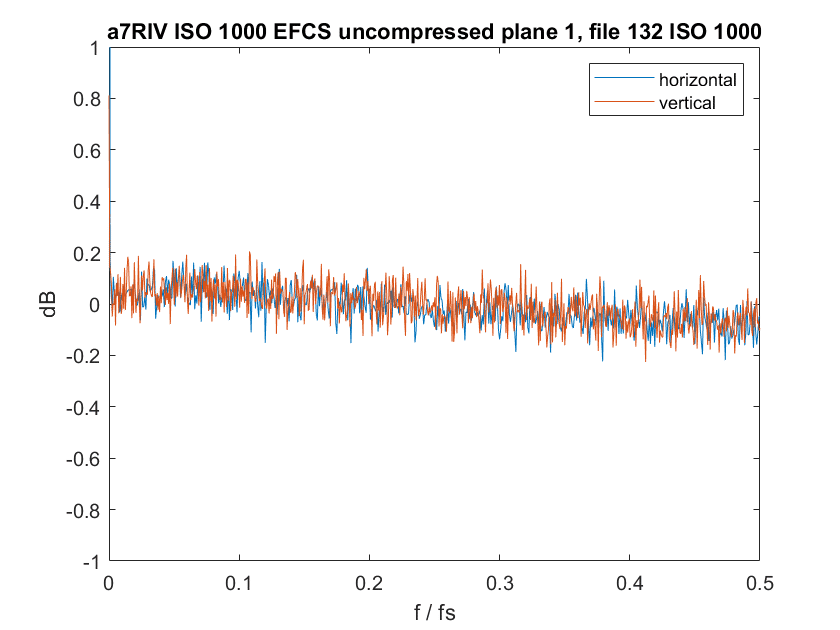
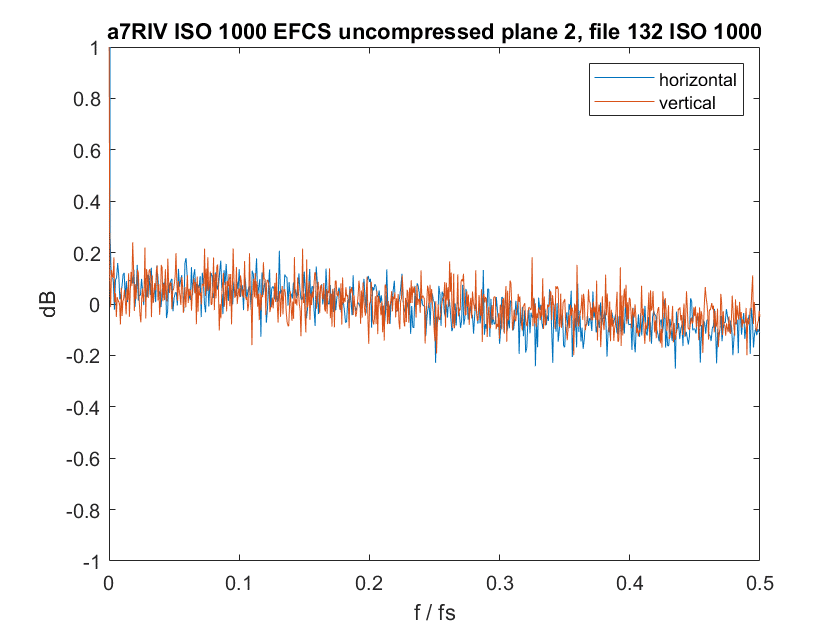
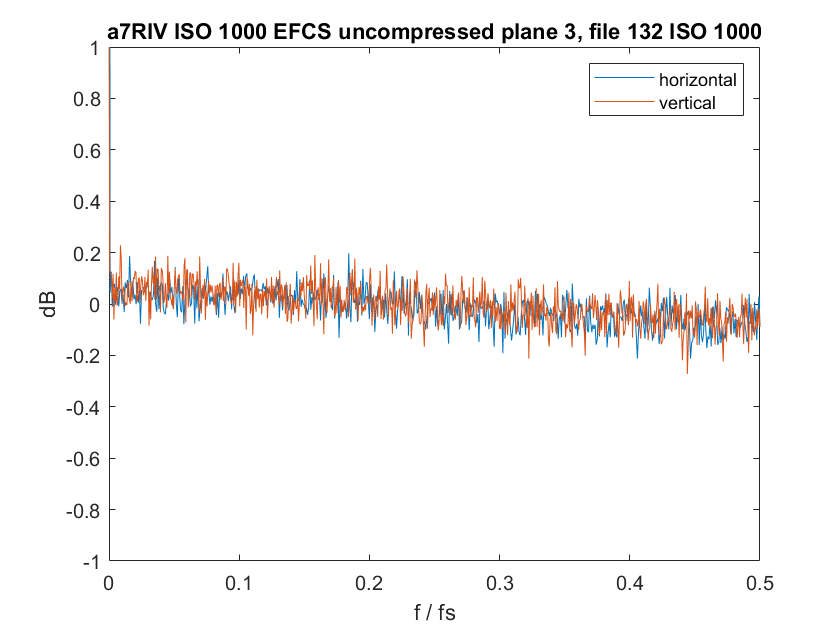
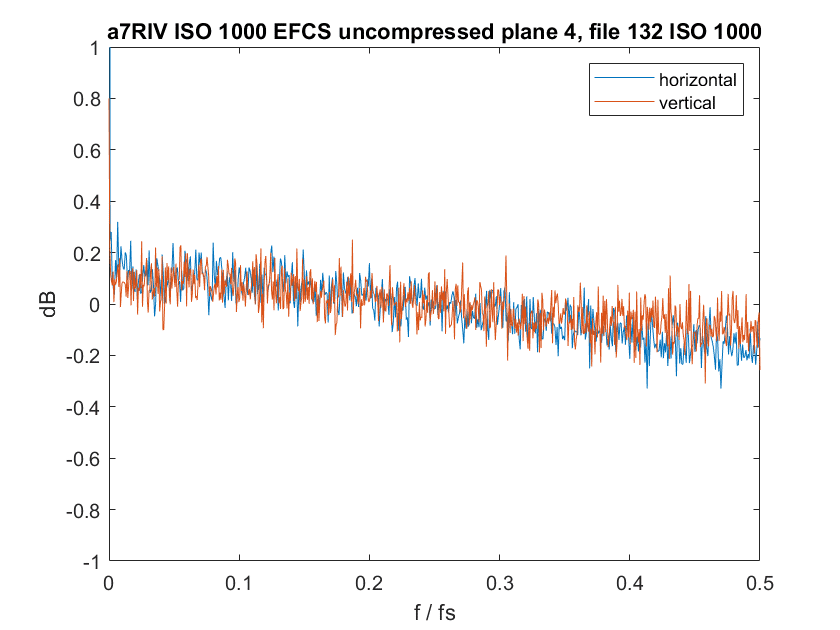
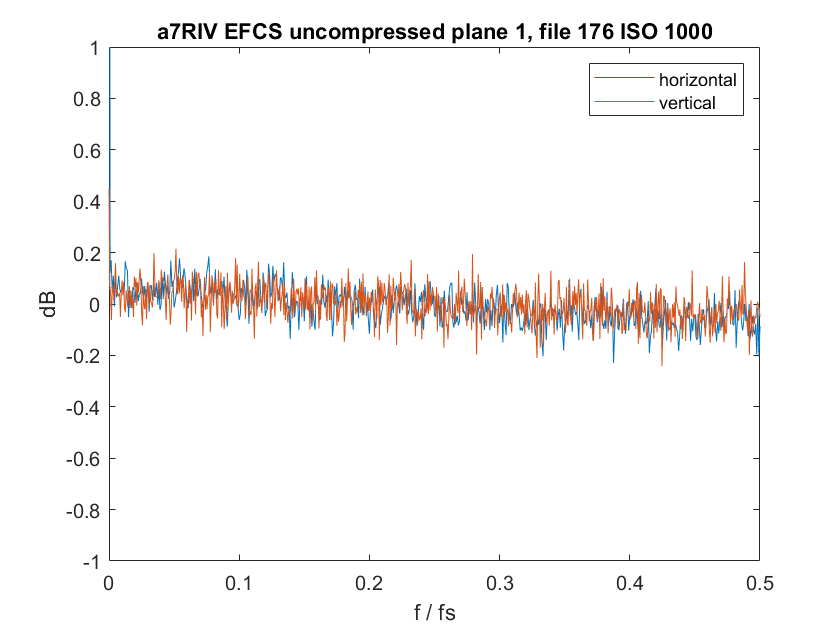
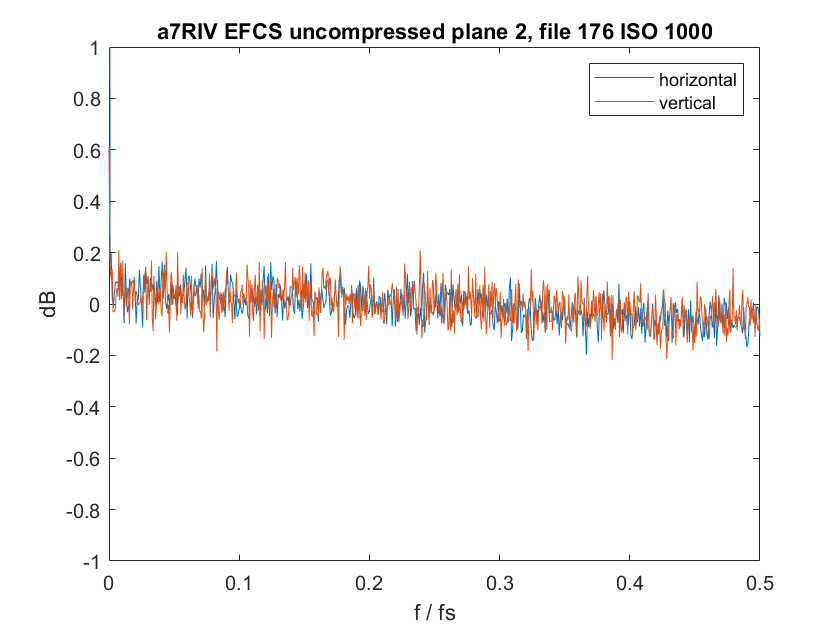
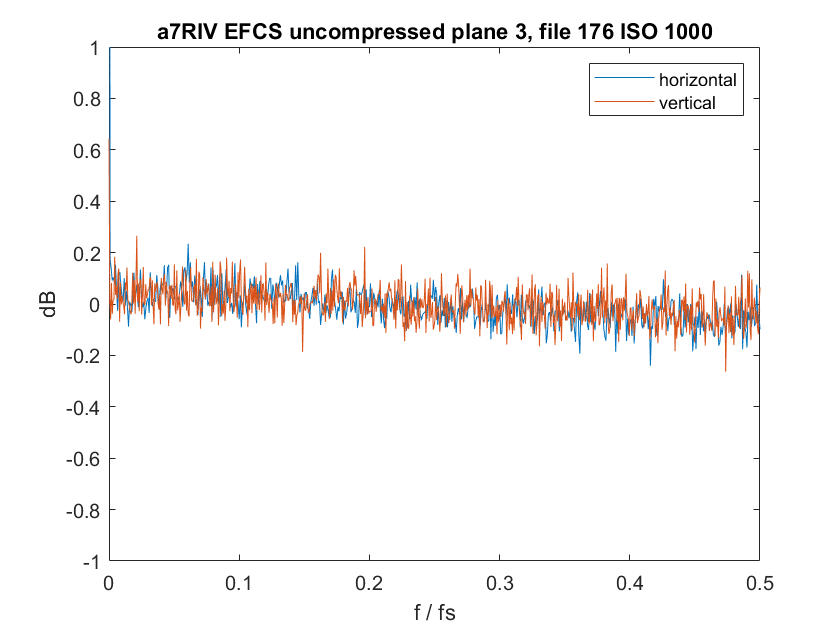
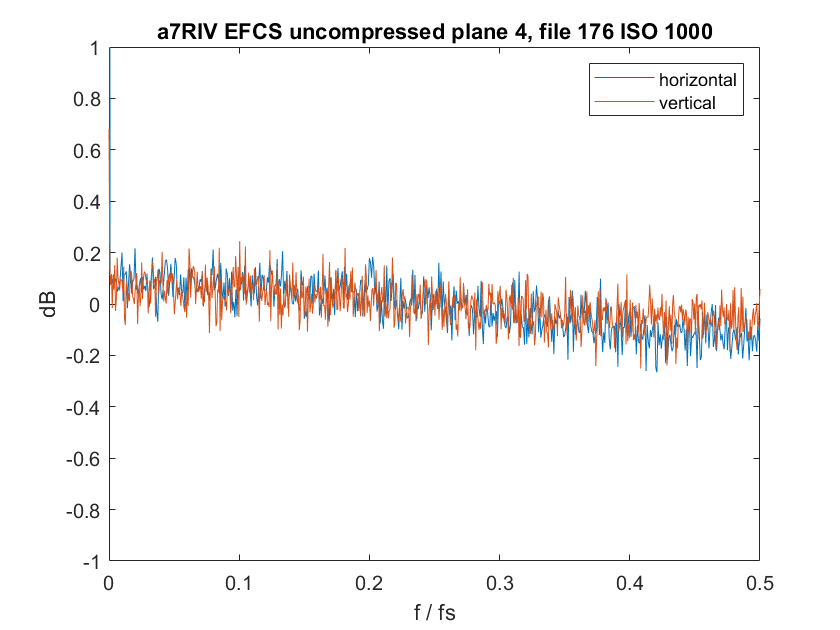
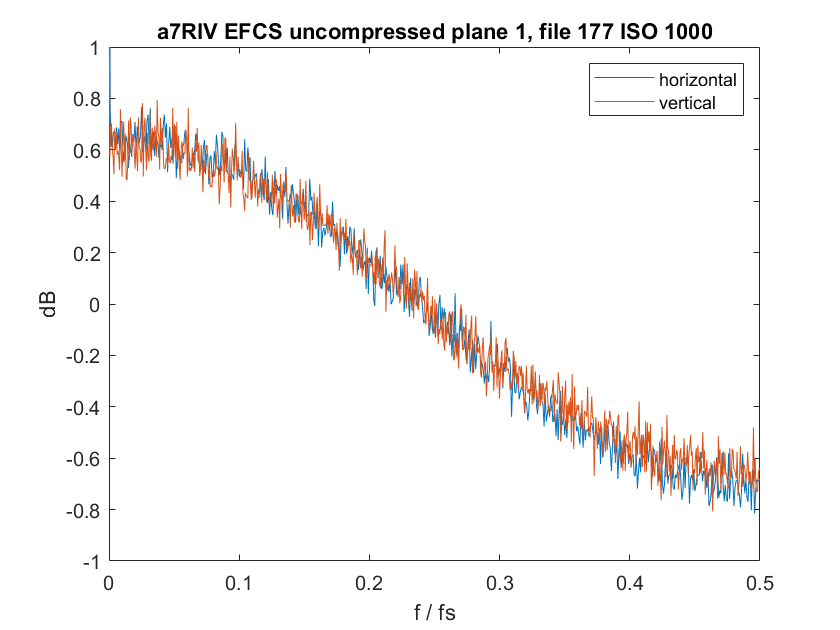
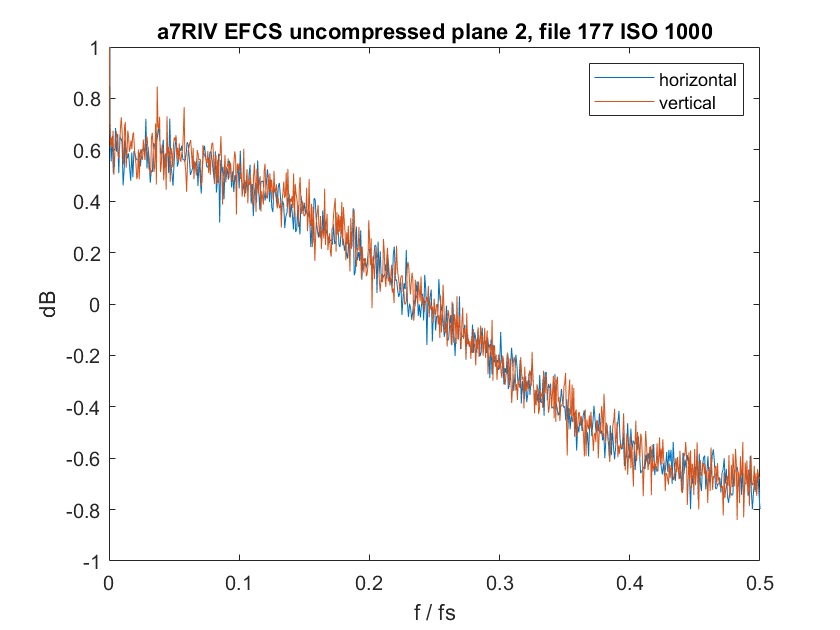
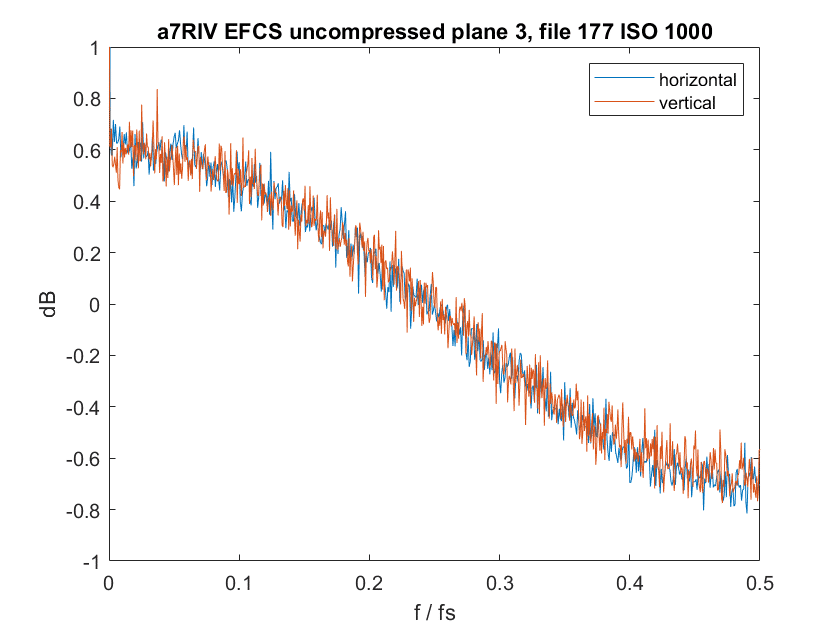
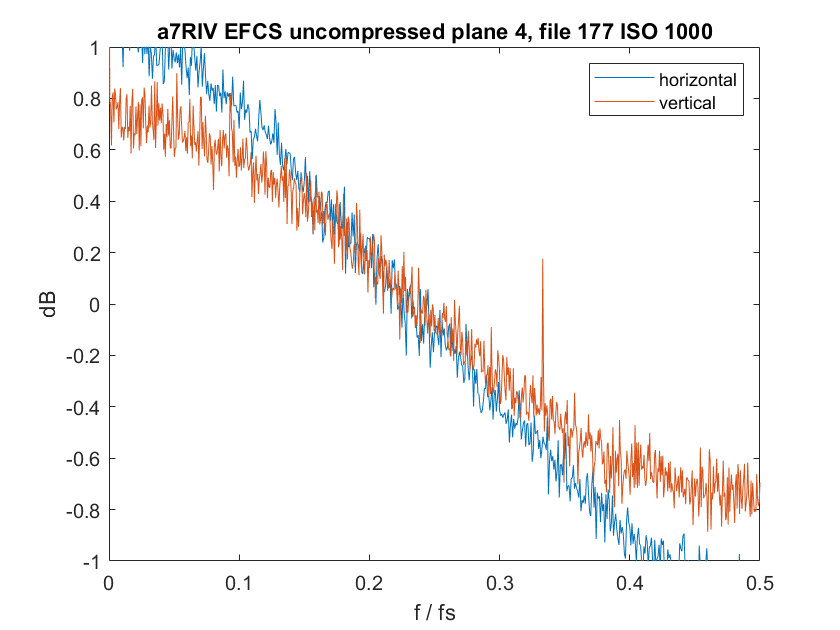
Mike Broomfield says
Thanks for the testing Jim.,
On the A7R2 you could get around this by selecting high speed in the drive mode (your testing I believe). This wasn’t the case for the A7R3 but could you test the A7R4?
Thanks
Nigel Tutt says
You wrote: “I’m not going to bury the lede here: ths Sony a7RIV eats stars just about like the a7RIII does.”
Was your proof reader on holiday?
6/10 — can do better.
Alex Nail says
Nigel, what gives you the right to talk to someone like that? Jeeeez.
JimK says
I assume that you’re complaining about the spelling that I used for the word “lede”. The etymology of the term is interesting. It is a neologism, but older than “mic” instead of “mike” as a short form of microphone, which I’m seeing more and more. The word refers to the first sentence of a news story, and is therefore more specific than the word “lead”, which can mean wither the first sentence or the first paragraph. It also has the advantage in the printing world in that it can’t be confused with the work “lead”, pronounced like the element, which is used to describe the layout of typeset text. The usage of the word “lede” in “bury the lede” is also colloquial, in that it refers to information that should be in the lede.
karl says
” ths Sony a7RIV eats stars just about like the “
JimK says
That is not a fault in proofreading. Grammar, maybe, but I wanted to strike an informal note.
Dave says
While I find Karl’s tone inappropriate, he is correct. Look at the FIRST word in the sentence fragment he quoted:
” ths Sony a7RIV eats stars just about like the “
JimK says
Got it now, thanks. Fixed.
NickA says
Can you explain how to interpret these graphs? In my world dB are measured as 20 x log (gain), meaning a 1dB loss is a gain of 0.9 (ie a 10% loss). Doesn’t seem catastrophic to me. Is this the wrong way to look at this?
JimK says
Yeah, 20 dB is a factor of ten for voltage, and a factor of 100 for power. It’s not that the high-frequency losses are in themselves indicative of serious problems, but rather that they indicate the presence of a type of digital signal processing that can cause issues in particular situations, like some kinds of astrophotography.
YAS says
You can turn off noise reduction and high sensitivity noise reduction, but does the phenomenon of star erosion still appear?
JimK says
Yes. It appears because that’s the way Sony designed the camera.
YAS says
Other filters may be the cause. I contacted Sony. Sony responded as follows : Image processing has been changed in the products after ILCE-7RM2 Ver.4.00 to alleviate the phenomenon.
Isn’t it completely fixed yet?
I am sorry for my poor English because I am Japanese. 🙂
JimK says
After the III cameras came out, it got better but didn’t go away.
YAS says
Thank you.
I reported this problem to Sony.
I’m inquiring if some kind of filter is in the shooting.
If so, I told Sony I wanted to off the menu from the filter.
Ed Hurst says
Hey Jim,
I have a question linked to use of the camera for star trails. Assume we are shooting in uncompressed RAW and everything set to maximum quality. Assume we have a fast enough card that the bottleneck is the camera, not the card. What is the shortest exposure that can be used if I want to shoot thousands of consecutive RAW files without the camera pausing at all for the write process to catch up? On one of my other cameras, I can do 2 second exposures in this way, but anything shorter and the camera pauses as the buffer fills up. Any idea what the exposure length tipping point is for this camera? THANKS!
JimK says
I had the same experience as you with an a7RIII. With a 300 MB/s SD card, the a7RIV is faster. I just tried it and it works fine at 1 second exposure intervals. That’s the closest I can do without going downstairs and rooting around in the intervalometer box.
Craig Johnson says
What Mirrorless Camera do you recommend for solid Milkyway shots? Thanks.
JimK says
Of the ones I’ve used, I think a FF camera like the a7RIII, a7RIV, a7III, Z6 or Z7 would be good choices. If the Sony’s raw filtering at long exposures bothers you, go with the Nikons. You can use Sony E lenses on Z cameras, but not the other way around.Fast lenses are more of an issue with MF cameras.
Adam says
What about a9ii? Not being iso invariant do you believe its an issue for astro? Should i go for a9ii or a7iv? Thanks buddy
JimK says
The a9II has the same sensor as the a9.
https://blog.kasson.com/a9ii/a9ii-edr/
https://www.photonstophotos.net/Charts/PDR.htm#Sony%20ILCE-7RM4,Sony%20ILCE-9M2
Caleb says
yeah i have an 7r ii i use for 8K timelapse….but it does leave a lot to be desired using it in bulb mode for tracked astrophotography. Thinking of selling it and getting a used 5DS/5DS R. much better battery life as well with those canons vs the old sony batteries